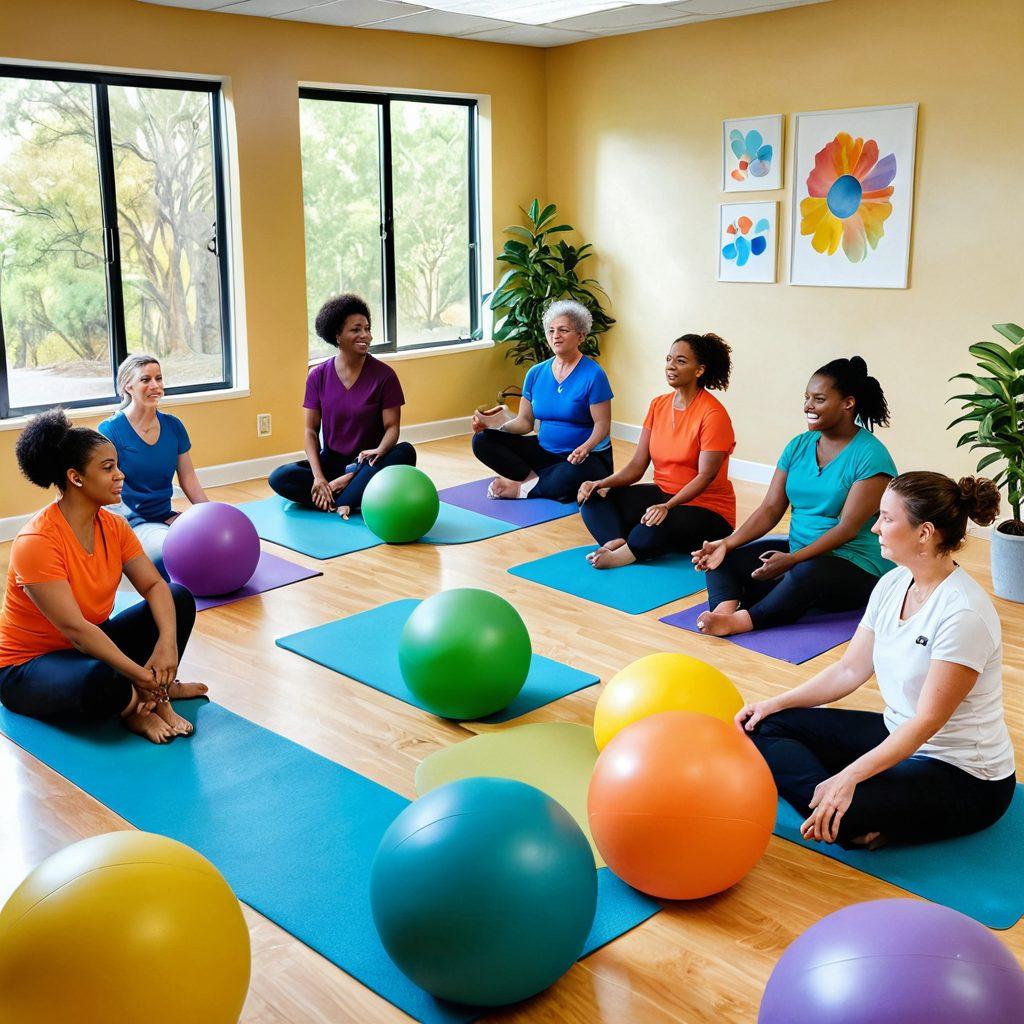Unlocking Potential: Transformative Bobath Therapy Techniques for Neurorehabilitation
The journey of rehabilitation is often fierce and filled with challenges, especially for those recovering from neurological issues such as strokes or movement disorders. This is where the Bobath method steps in, offering a beacon of hope through its transformative therapeutic techniques. But what exactly is Bobath therapy? Can it truly enhance neurorehabilitation? Let’s delve into this powerful approach and uncover how it can unlock the potential of those struggling with motor function improvement and recovery. After all, isn't it inspiring to think about how innovative methods can change lives?
At the heart of Bobath therapy lies an understanding of the complexities of the human body and its movements. Developed by physical therapists Berta and Karel Bobath, this method emphasizes the importance of individualized treatment plans that cater to the unique needs of each patient. Imagine a therapist closely observing a patient's movements, noticing every nuance—this level of attention is key to creating effective strategies for stroke rehabilitation and motor skills recovery. Bobath therapy applies sensory-motor training to stimulate the nervous system, laying the groundwork for improved movement and functional recovery. Isn't it incredible how personal touch can lead to monumental change?
Consider Jane, a vibrant woman in her 60s who suffered a stroke that left her with partial paralysis. Initially, her progress seemed slow, often frustrating both her and her therapists. However, introducing the Bobath method into her rehabilitation opened new doors. Jane's therapists focused on repetitive and meaningful movements that related to her daily activities, enhancing her engagement and interest. With their guidance, she navigated through the complex maze of rehabilitation methods and made strides that were previously thought impossible. "You have to believe in the process, even when it feels like the road is long," she often says. How can you apply that belief in your own recovery journey?
Engaging patients in their recovery is essential, and that's where the Bobath method excels. It centers on movement therapy that encourages patients to actively participate in their rehabilitation. Governors of neurorehabilitation encourage exploration of various movements through therapeutic techniques that make recovery feel less like a chore and more like an adventure. Does it make you reflect on your own approach to recovery? When did you last actively engage in a process that seemed daunting?
Bobath therapy also shines in the realm of movement disorders treatment, offering diverse techniques designed to improve coordination and balance—essential attributes for a successful recovery. By utilizing various rehabilitative practices, therapists ensure that patients not only focus on physical improvements but also on rebuilding their confidence. So, next time you think about rehabilitation, remember the Bobath method and its potential to empower through movement. This is not just about physical therapy; it's about patient recovery, hope, and the belief that every small victory counts on the path to functional recovery. What are you willing to do today to take that next step forward?
Revolutionizing Stroke Recovery: The Bobath Method and Its Impact on Motor Function
In the world of neuro rehabilitation, the challenge of stroke recovery stands out as a formidable battle. Every year, millions of people face the aftermath of strokes, grappling with limitations in their motor functions and seeking paths back to their former selves. The quest for effective rehabilitation methods has led many to discover transformative approaches, like the Bobath method. Developed in the mid-20th century by physicians Berta and Karel Bobath, this technique is not just about regaining lost abilities; it is about revolutionizing how we understand movement and recovery. Imagine a world where your body reclaims its lost potential, breathing new life into the way you move and interact. That’s the promise of the Bobath therapy, so let’s delve deeper into how it’s making waves in stroke rehabilitation.
The essence of the Bobath method lies in its holistic approach, focusing on individualized therapy that corresponds to the specific needs of the patient. Are you aware of the profound implications of tailored interventions? The Bobath therapy integrates sensory-motor training into the rehabilitation process, emphasizing the relationship between sensory input and motor function improvement. This means that during each session, physiotherapists observe and engage with patients on a personal level, adjusting techniques to elicit the best possible movement strategies for each unique condition. In short, it's about re-establishing connections that may have been severed due to stroke. Bobath therapists skillfully guide this transformation, leading to not just physical advancements, but emotional upliftment as well.
As you consider the impact of the Bobath method, it’s fascinating to recognize how it transcends basic physical therapy paradigms. The word 'rehabilitation,' often synonymous with mere exercise, is elevatedunder the Bobath umbrella into a dynamic interplay of movement and cognition. Have you ever thought about what it truly means to rehabilitate? It’s not just about stretching and strengthening but also about regaining confidence. The therapeutic techniques employed in Bobath therapy encourage patients to trust their bodies again, to explore movements that they may have abandoned, and to dwell within the newfound joys of movement that may come with practice. Stories abound of individuals rekindling their abilities—once unthinkable tasks become triumphs in their recovery journey.
Moreover, the Bobath method stands as a pillar in the broader concept of neurological rehabilitation. This technique plays an important role in treating movement disorders by promoting functional recovery. Through engagement in meaningful activities, patients partake in exercises that are not merely about regaining efficiency; they evoke a sense of achievement. This emphasis on functional recovery supports the Bobath approach's efficiency in stroke recovery, ensuring that patients are equipped with the tools to thrive in everyday life. When a patient shares, 'I never thought I could lift my arm again,' it’s a statement that encapsulates the profound ethos behind the Bobath therapy—striking a balance where hope meets tangible progress.
Finally, let’s explore how the Bobath therapy distinguishes itself in the broader context of physical therapy and movement disorder treatment. By using a variety of rehabilitative practices, the Bobath method fosters an environment where patient recovery is not just encouraged; it is an evolving process. It’s about inviting patients into a conversation with their own bodies, fostering relationships with movement that bring joy and functionality back into their lives. It’s about asking, how can we change the narrative of stroke recovery from one of limitation to boundless capability? The answer lies within the heart of the Bobath method, ready to unlock the potential for a brighter future in neurorehabilitation.
Healing Through Movement: Effective Bobath Therapy Practices for Neurological Rehabilitation
When we hear the words 'movement' and 'healing' used in the same sentence, it stirs a sense of hope within many of us. For individuals recovering from neurological disorders, stroke rehabilitation, or other movement disorders, the ability to reclaim their motor skills is nothing short of miraculous. Enter the transformative world of Bobath therapy, a rehabilitative practice that blends the art of movement with science to promote functional recovery. This method doesn’t just focus on restoring movement; it nurtures the entire body and mind, empowering patients to reclaim their lives. But how does the Bobath method achieve this, and what elements make it so effective in neuro rehabilitation?
Bobath therapy is more than just a treatment; it's a philosophy of care that acknowledges the unique journey of each patient. Imagine a patient who, once unable to lift their arm after a stroke, gradually regains the ability to stretch, lift, and reach with confidence. This is the magic of sensory-motor training wrapped in the Bobath approach. By encouraging movement that feels instinctive rather than forced, physiotherapy can become an engaging process. One can’t help but wonder: What if relearning to walk or write could also mean rediscovering oneself?
In every session of Bobath therapy, skilled therapists guide patients through essential therapeutic techniques that are tailored to their specific needs. Through targeted exercises and personalized approaches, patients embark on a journey of motor function improvement. This hands-on support can ignite an internal motivation, leading to significant breakthroughs. Have you ever noticed how a small accomplishment can ignite a powerful sense of achievement? That’s the essence of Bobath therapy; it transforms minor milestones into milestones of progress that deserve celebration.
But who can benefit from the Bobath method? The answer is, virtually anyone experiencing challenges related to movement. From stroke recovery to treatment for cerebral palsy and other neurological conditions, the flexibility inherent in Bobath therapy allows it to adapt to a variety of patient conditions. Just imagine a community of individuals, once burdened by movement limitations, now confidently navigating their daily lives, thanks to neurorehabilitation strategies that prioritize individualized care and engagement.
As we reflect on the impact of Bobath therapy, it’s evident that healing through movement offers something much deeper—a rekindling of hope and possibility. Those who witness the gradual yet remarkable achievements of patients in neuro rehabilitation understand that this journey is not just financial or physical; it's filled with emotional triumphs as well. Are we ready to embrace the power of movement therapy in our lives? As we explore the rehabilitative practices of Bobath therapy, may we all be inspired by the resilience of the human spirit in the face of adversity.


